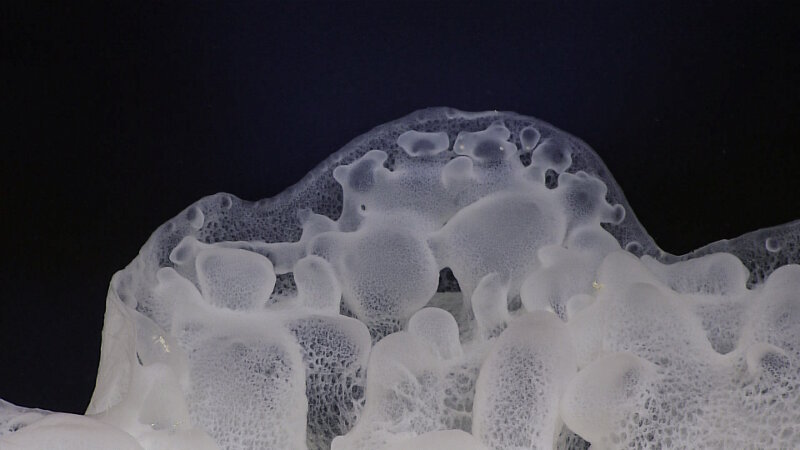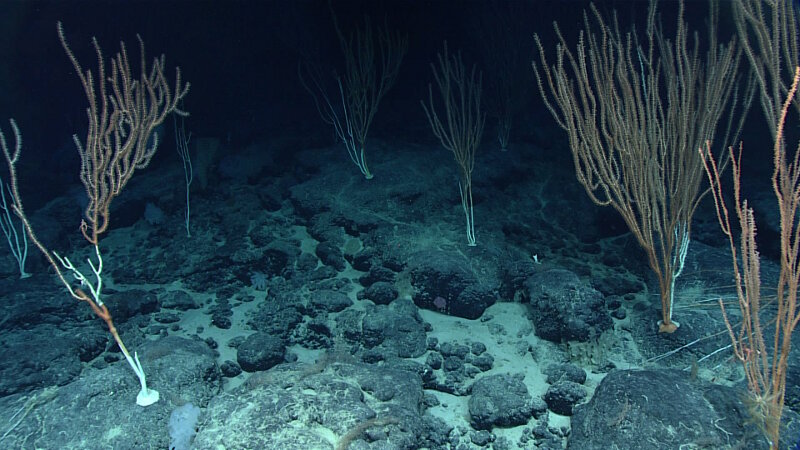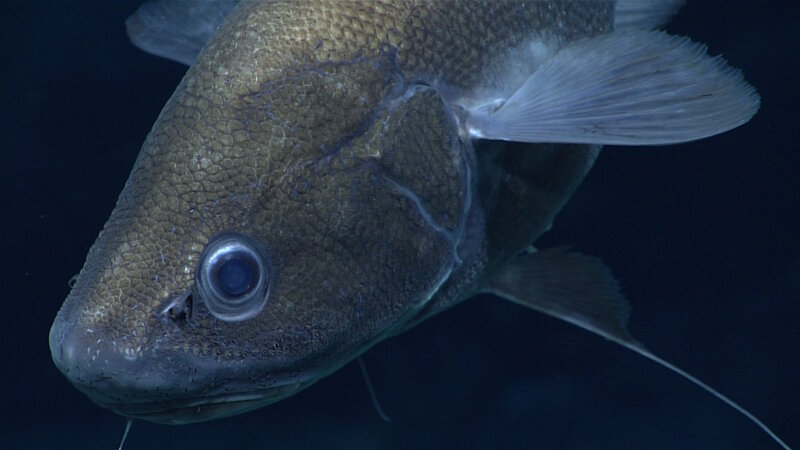-

Close-up view of the structure of one of the many glass sponges observed at Shostakovich Seamount. Image courtesy of the NOAA Office of Ocean Exploration and Research, Deep-Sea Symphony: Exploring the Musicians Seamounts. Download larger version (jpg, 789 KB).
-

The coral community at Shostakovich Seamount was different than the ones observed on other dives. Bamboo corals were the most abundant large coral species present, all of the colonies observed were roughly the same size. Our science team thinks that this could indicate that the colonies are all the same age and potentially from the same spawning event. Image courtesy of the NOAA Office of Ocean Exploration and Research, Deep-Sea Symphony: Exploring the Musicians Seamounts. Download larger version (jpg, 1.1 MB).
-

Rattail fish observed while exploring Shostakovich Seamount. Image courtesy of the NOAA Office of Ocean Exploration and Research, Deep-Sea Symphony: Exploring the Musicians Seamounts. Download larger version (jpg, 704 KB).